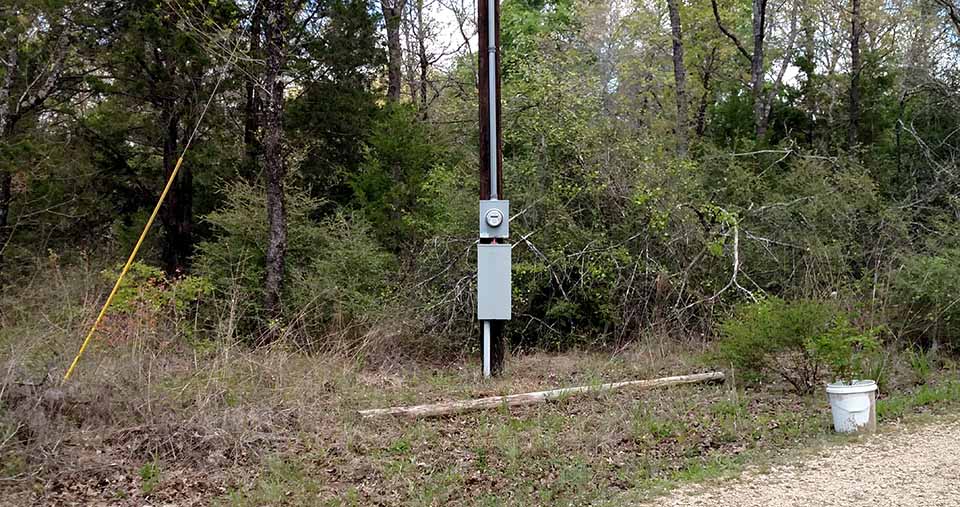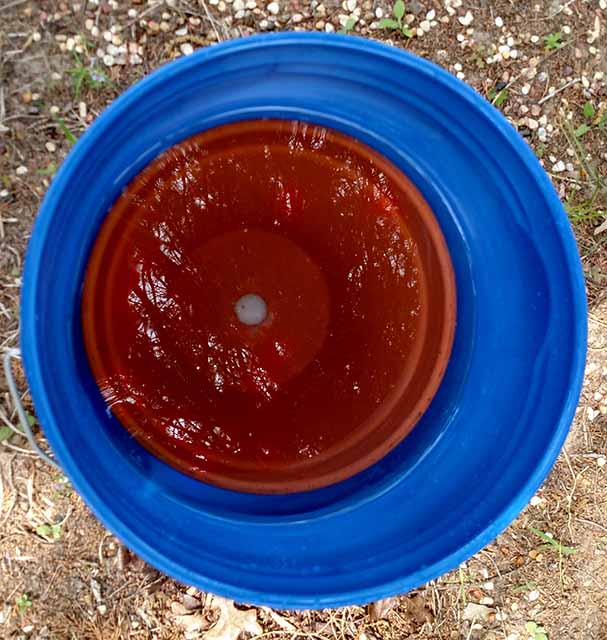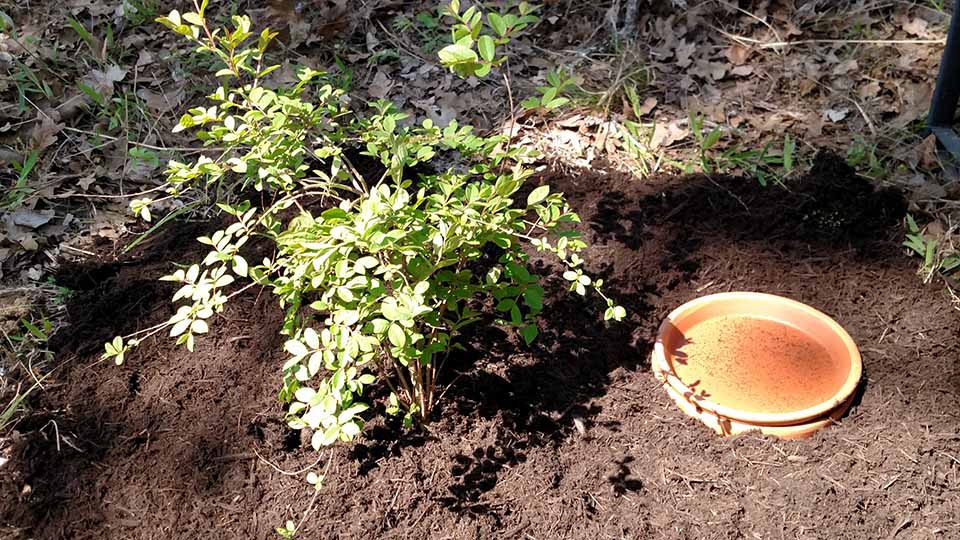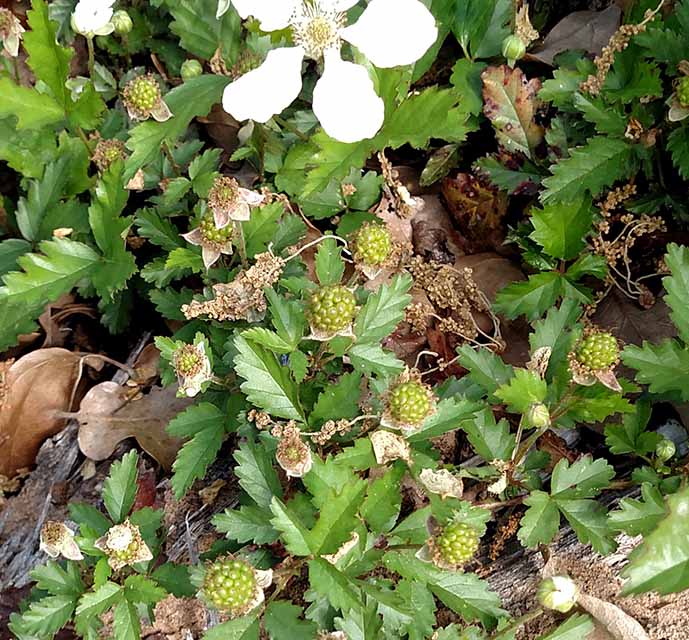I have now started to use the modified clay pots in my garden. This post shows the first one I used when planting a crape myrtle.
Last year when I ordered trees from the Arbor Day Foundation, I received some free dormant trees: five crape myrtles, one red maple and two forsythia. The forsythia didn’t make it (I don’t think I was quick enough in planting them). I planted the crape myrtles in five gallon buckets because I didn’t know where I wanted to plant them and four of the five survived. I gave the red maple to my mother and it is doing fine.
When we had electric lines run to our property, the utility pole was placed alongside our driveway. Unfortunately, this is what we see off to the right from the front porch:

Not a pretty sight. I have been struggling with how to deal with this without compromising access to the electric box. After much thought, I decided that the crape myrtles would do the trick – they would at least hide the box and the lower part of the pole. I figure I can live with the upper part of the pole showing because the crape myrtles will take the focus off it (at least for most of the year when they leaf out and bloom).
So, now to use my modified clay pots. First I soaked one in a bucket. They should be wet when you bury them so initially when they are filled with water, all of the water will soak into the ground.

Then I dug a large oblong hole, one side deep enough to accommodate the crape myrtle and the other side deep enough to come just below the top of the pot. After planting and burying, I then covered the area around with a layer of mulch.

One down – I still have a lot more to go! Late in the afternoon I looked at where I plan to put my blueberries and hazelnuts and thought I might go ahead and dig holes in preparation for the following day. However, I found a couple of roadblocks. One was an ant hill which will definitely have to be dealt with and the other was rampant dewberries which have been flowering and setting fruit. I need to work around the dewberries until after the fruit can be harvested.
Central Texas has loads of wild dewberries which are related to the blackberry. Their stems trail along the ground and root along the stem. They have fine thorns all along the stem which cause a lot of scratches if you aren’t careful. The berries are worth the scratches but are soft and tender and difficult to pick without squashing them. The last two years I have tried to beat the birds to the ripe berries but have only succeeded in getting a handful. Boy, would I like to get enough to make some jelly or jam.


This year it seems we have a bumper crop of berries – hopefully I will be able to harvest more than I have previously!